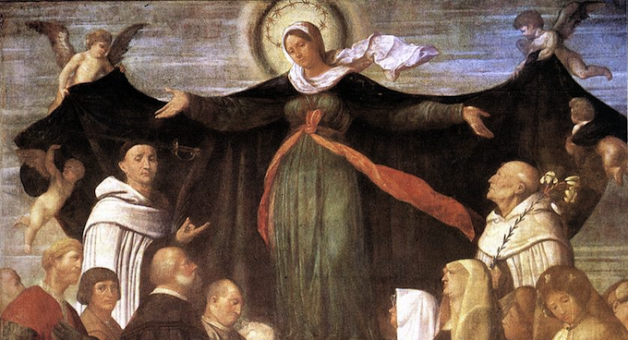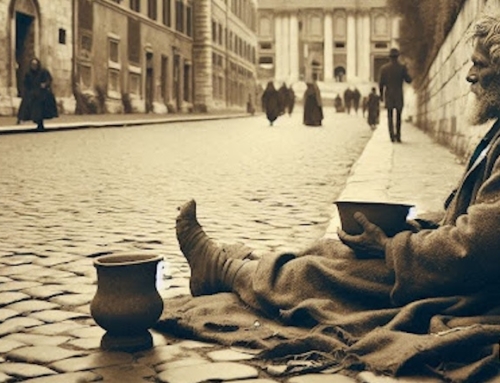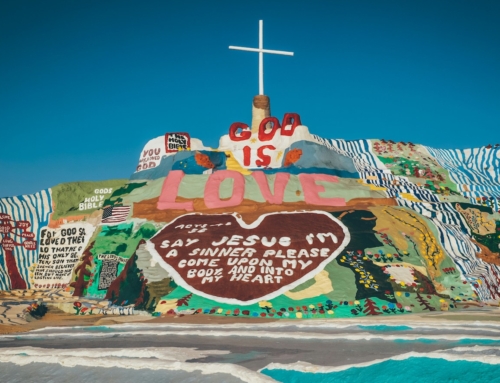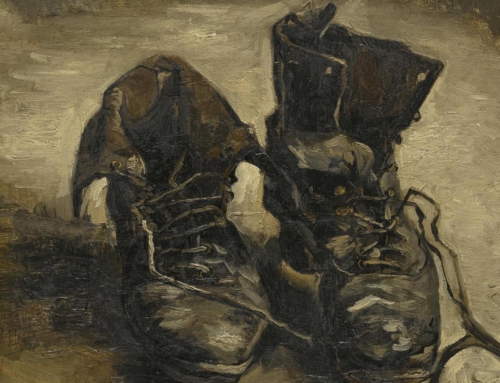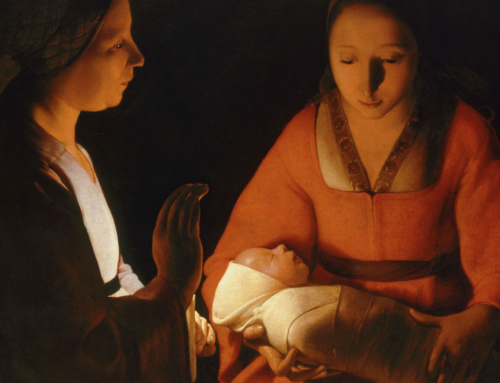The Blessed Virgin Mary is known to the Church under dozens of different titles. There are titles that describe her attributes, such as “Seat of Wisdom” or “Help of Christians,” which we find in the Litany of Loreto. Then there are titles that refer to her patronage of particular places or peoples, such as Our Lady of Guadalupe or Our Lady of Lourdes. Today the Church celebrates the Mother of God under her patronage of a particular religious order: the Carmelites. But who exactly is Our Lady of Mt. Carmel, and what does this title teach us about Mary?
The feast of Our Lady of Mt. Carmel was instituted to commemorate a thirteenth-century apparition of Mary to the English Carmelite St. Simon Stock. The venerable Catholic devotion of wearing the Brown Scapular comes from this apparition and Mary’s words that “This shall be a privilege for you and for all Carmelites: whoever dies clothed in this shall not suffer eternal fire, rather, he shall be saved.”
Carmelite tradition tells us that the Order is descended from the prophet Elijah and his followers, who spent a good deal of their time on Mt. Carmel. “Carmel” is said to mean “garden” or “orchard,” and this mountain was known in the Old Testament as a very beautiful and verdant place. It was used by many for retreat and prayer, as the long tradition of Carmelite hermits attests.
However, it was also on this mountain that Elijah did battle with the prophets of the false god Baal (1 Kings 18). Four hundred and fifty prophets of Baal spent hours calling on their god to come and consume the sacrifice they had prepared, but to no avail. Then Elijah prepared his own sacrifice, prayed to God, and was rewarded by having fire come from heaven to consume the sacrifice. The Israelites were inspired by this to return to the Lord and to quit following the false god, even putting the false prophets to the sword. Then, after Elijah went to the top of Mt. Carmel and prayed, God sent rain for the relief of Israel’s drought-stricken land.
Mary’s connection to the fertile mountain of Carmel highlights her spiritual fertility in bearing a rich produce for the kingdom of heaven. She is described in the traditional Carmelite hymn Flos Carmeli as a vine laden with blossoms: the “Flower of Carmel.” Mary is a vine whose blossoms are the souls that she aids by her patronage and prayers. She waters and nourishes them by obtaining the grace they need to grow and flourish in the spiritual life. The Blessed Mother models for all her children, but especially for Carmelites, what it means to live a quiet life of prayer and interior perfection. She “kept all these things and pondered them in her heart,” as St. Luke says.
Mt. Carmel’s history as a place of spiritual battle also reveals something to us about Mary: namely, that she is willing to fight for the salvation of her children, as manifested in her promise to St. Simon Stock: whatever the manner of vice and sin that someone mires himself in, Mary will aid him in breaking free from it.
It is easy to doubt this. Sin gains a powerful hold over us that at times seems impossible to overcome. However, there are countless stories that exemplify the greater power of Mary in winning out over sin. Pope St. John Paul II explains that wearing the scapular is a simple act that nourishes devotion and makes us “sensitive to the Virgin Mother’s loving presence” in our lives. When we thus become aware of her presence, we are able to allow her to work calmly and quietly in moving us to repentance. Mary intercedes for us and, like the prophet Elijah, calls down the fire of heaven. Her fire, though, is the fire of an all-consuming love for her Son, Jesus Christ. It burns up the bonds of sin and frees us to live as children of God.
It was consideration of the goodness of the Blessed Virgin and the power of her maternal care that moved the eminent Carmelite St. Therese of Lisieux to write: “Mary, if I were the Queen of Heaven and you were Therese, I should want to be Therese that you might be the Queen of Heaven.” Let’s rejoice today then with all Carmelites in giving honor to our Queen and Mother.
✠
Image: Moretto da Brescia, Virgin of Carmel

